- Home
- About
- Student Led
- Research Informed
- Practice Focused
- Resources
- News
- Green Campus Podcasts
- Case Studies
- Green Labs Community
News
Habitats At UCC
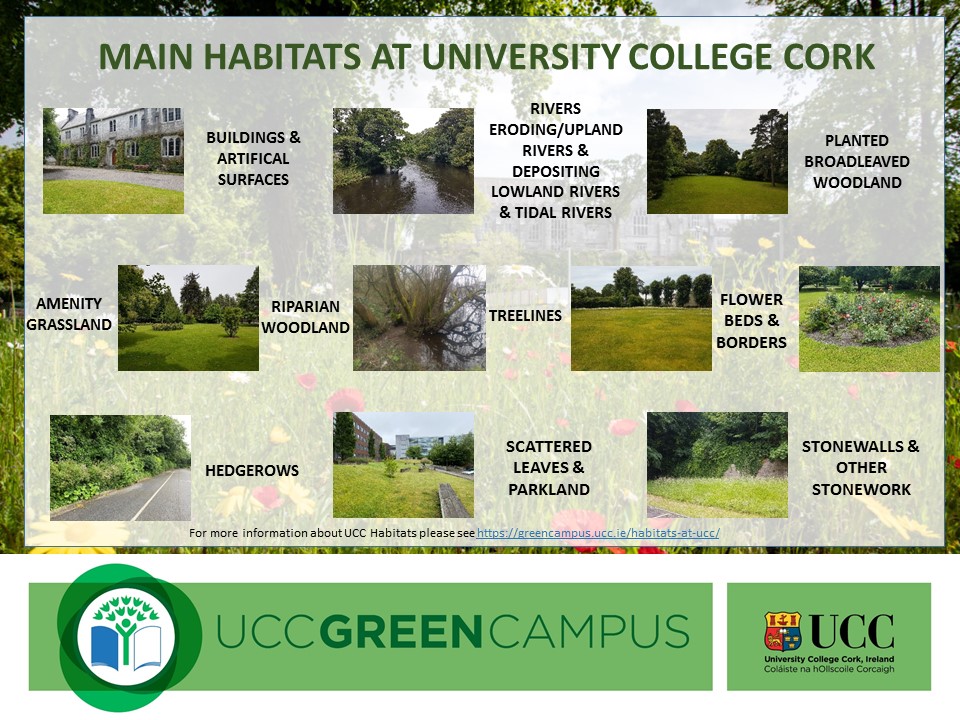
Our beautiful campus is not only a place of learning and independent thinking but is also a home to 27 different forms of biodiversity habitats.
Our beautiful campus is not only a place of learning and independent thinking but is also a home to 27 different forms of biodiversity habitats.
Biodiversity refers to the huge variety of life on the planet. This includes not just the variety of species, but the variety of the genetic information within and between species, the variety of the habitats and ecosystems where these species live. Biodiversity is everywhere – not just in our National Parks, Nature Reserves or other protected sites – biodiversity is in our gardens, in our cities, on stone walls, in the earth and even inside us!
Throughout the eight campuses of UCC 27 different habitats were recorded in various studies between 2014 and 2016. A summary of the main habitats found on campus are listed below while our biodiversity action plan can be found UCC Biodiversity Action Plan 2018-2023.pdf
BUILDINGS AND ARTIFICIAL SURFACES
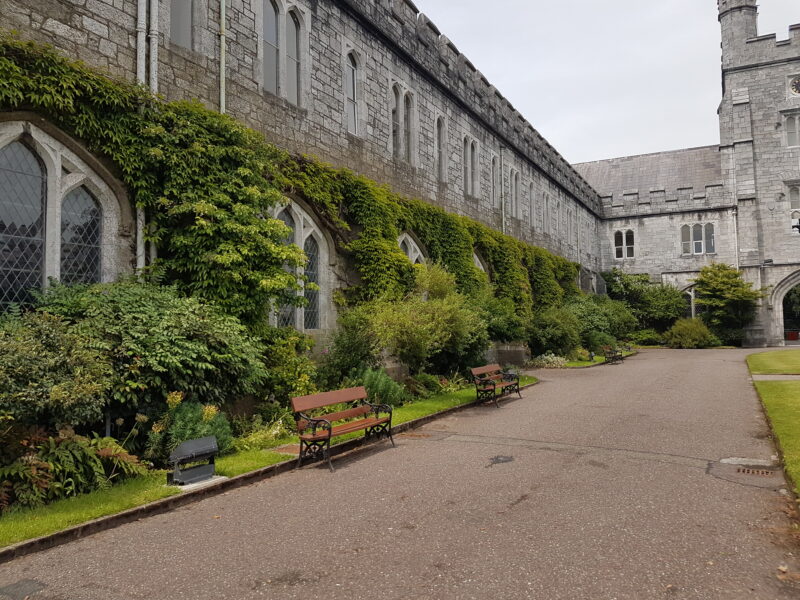
This habitat covers approximately 21.7ha of the surveyed areas and is one of the habitats of least value to wildlife. However, this habitat does support some biodiversity. Plants recorded here include Cat’s Ear (Hypochaeris radicata) and Buddleja (Buddleja davidii). The humid areas of concrete and tarmac contain some infrequently recorded bryophytes and are of high local importance for bryophytes
AMENITY GRASSLAND
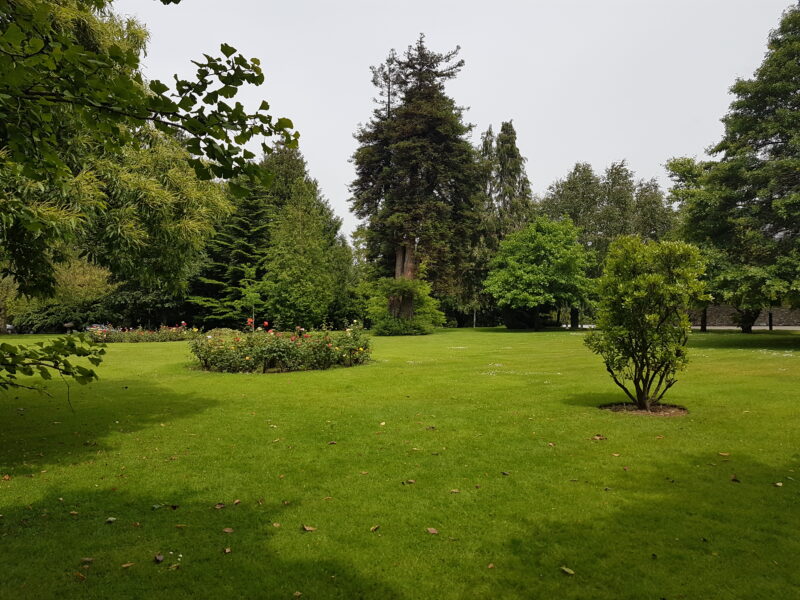
This habitat occurs both in small pockets together with ornamental borders and single trees among buildings and carparks as well as covering larger areas such as sports pitches. This habitat is dominated by grasses such as Perennial Rye Grass and Yorkshire Fog and commonly includes native wildflowers such as Daisy and Dandelion. However, due to current management practices which maintain the sward very tight this habitat is currently of limited biodiversity value and has generally been assessed as having low local importance for biodiversity.
SCATTERED TREES & PARKLAND
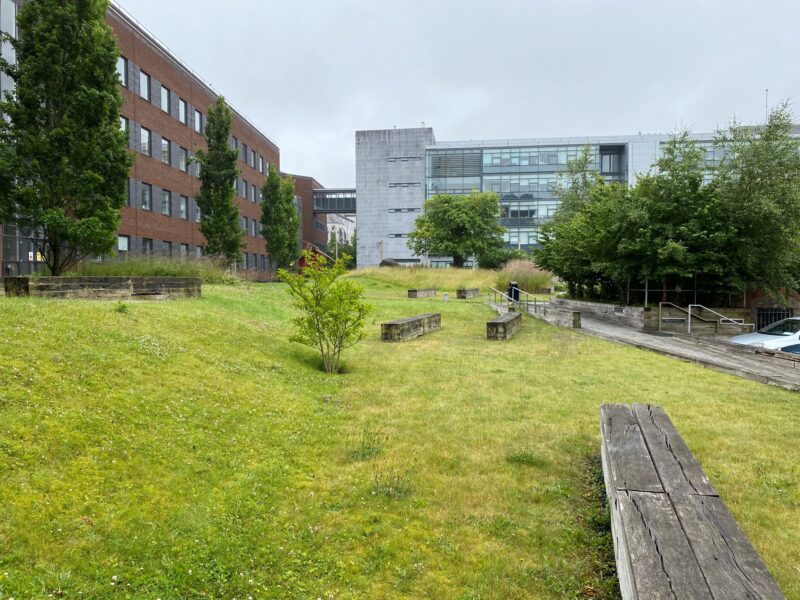
This habitat consists of large, mature trees, both native and non-native, scattered amongst a generally tight sward of amenity grassland covering approx. 1.5 ha. Many of the trees contain crevices and hollows which can be used by bats for roosting and other species. Some of the larger trees in the habitat near the Glucksman Gallery have been identified as being of high local value for bryophytes and provide potential roosting sites for bats. The habitat is currently of moderate local importance.
RIPARIAN WOODLAND
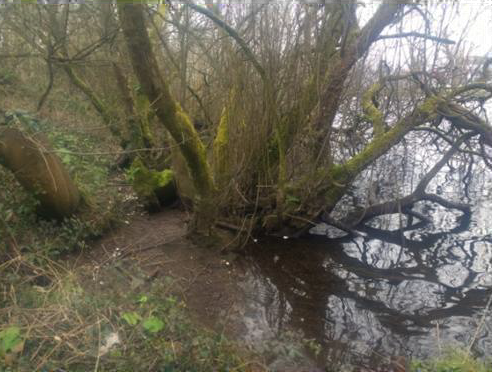
There are two main parcels of Riparian Woodland, one in the ERI Campus and one in the North Mall Campus. The Riparian Woodland in the ERI Campus is a willow-dominated woodland on the banks of the River Lee. Alder is locally frequent with Common Nettle and Remote Sedge occurring in the field layer. There is a patch of the invasive Himalayan Balsam within the woodland. As a willow-dominated woodland on a floodplain, it has been classed as Annex I habitat Alluvial forest with Alnus glutinosa and Fraxinus excelsior.
The second parcel of Riparian Woodland is in the North Mall Campus covering approx. 1.7ha. While this is a larger expanse of woodland, it has a high proportion of non-native species, both in the canopy layer and in the other layers of the woodland. The canopy is composed of Ash, Sycamore and Alder. The structure and ground flora of the woodland are similar to native woodlands. Native species present such as Pendulous Sedge (Carex pendula), Wood Dock (Rumex sanguineus) and Hemlock Water-dropwort (Oenanthe crocata) are indicative of this type of riparian woodland. Non-native, invasive species are also present and include Himalayan Balsam, Japanese Knotweed, Traveller’s Joy, Winter Heliotrope and Cherry Laurel.
RIVERS: ERODING/UPLAND RIVERS & DEPOSITING LOWLAND RIVERS
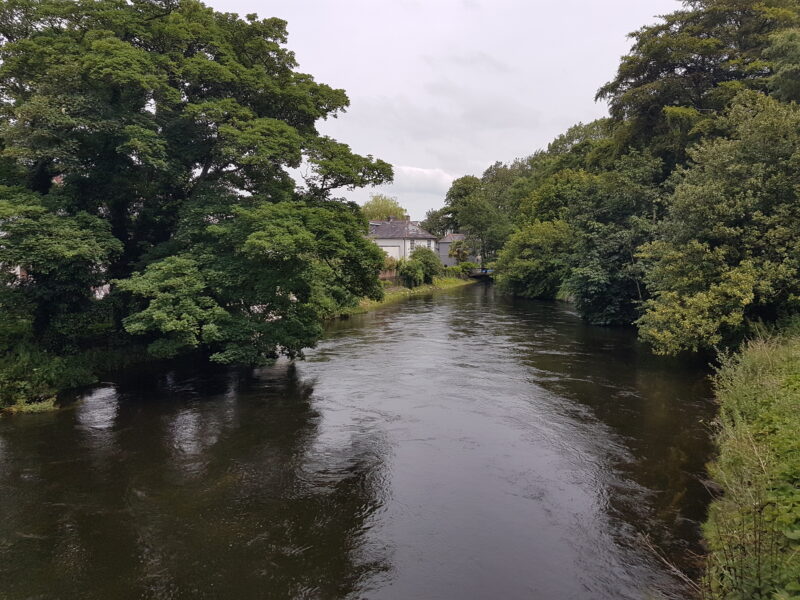
The River Lee flows runs trough the lower grounds of the main campus and flows adjacent to our North Mall and ERI landbanks.
An Otter survey of the River Lee near UCC, conducted by Dr. Paddy Sleeman of UCC and Cork Nature Network (CNN) in 2017, found three otter resting sites adjacent to UCC. One site was located at the entrance to UCC campus near Western Road with another site located at the western end of the North Mall Campus. The third site was found just west of the Western Campus. Numerous otter spraints were recorded along the River Lee within the Main Campus and adjacent to the North Mall Campus, Mardyke Sports and Western Campuses. Evidence of Mink was also recorded along the south channel of the River Lee near the Main and Western Campuses.
A series of Otter surveys were carried out by Ryan Hanley in 2014, 2015 and 2016 along the River Lee as part of the EIS for the Lower Lee Drainage Scheme (Ryan Hanley, 2016). These surveys identified two active otter holts in the vicinity of the ERI Campus, one upstream and one downstream near the Lee Water Treatment Plant. This second holt appeared to be a natal den where successful breeding took place in 2015. They also concluded that in 2015 there was a high possibility of a natal den existing on UCC’s North Mall Campus. (This is likely to be the same holt identified as west of the North Mall Campus by the CNN Survey)
It can be concluded that the areas of the campus located around the river bank are an important habitat for otters, potentially providing the breeding grounds for this protected species.
The unwanted invasive species, American Mink, was also recorded on the main campus during the 2016 mammal survey. Fox and Brown Rat were recorded in the river bed of the tidal mill race at North Mall Campus. The River Lee was also identified as one of the main habitats of importance for bats across the North Mall, Main and Western Campuses.
FLOWER BEDS & BORDERS
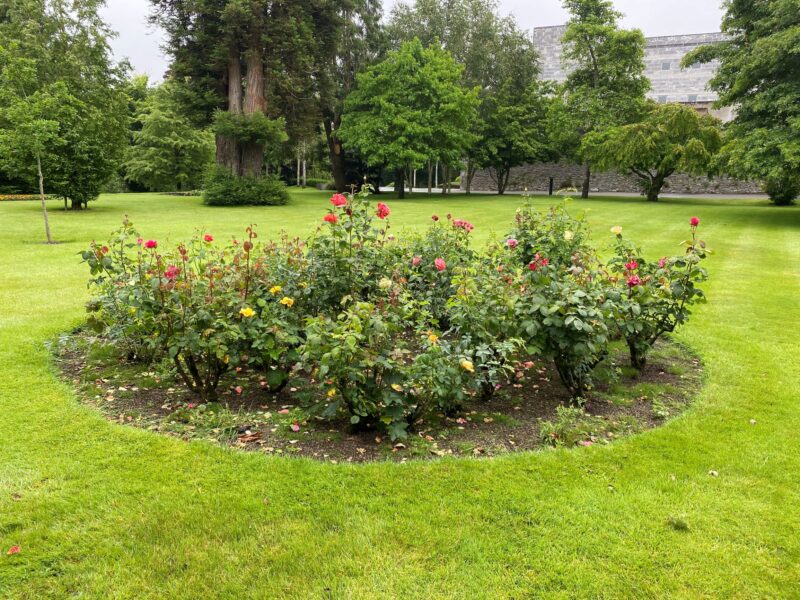
0.15ha of this habitat has been mapped widely across the Main, North Mall and Western Campuses and on Main Campus it often occurs in a mosaic with scattered trees and parkland (WD5) (approx. 2ha). The species in this habitat are largely non-native, ornamental species.
PLANTED BROADLEAVED WOODLAND
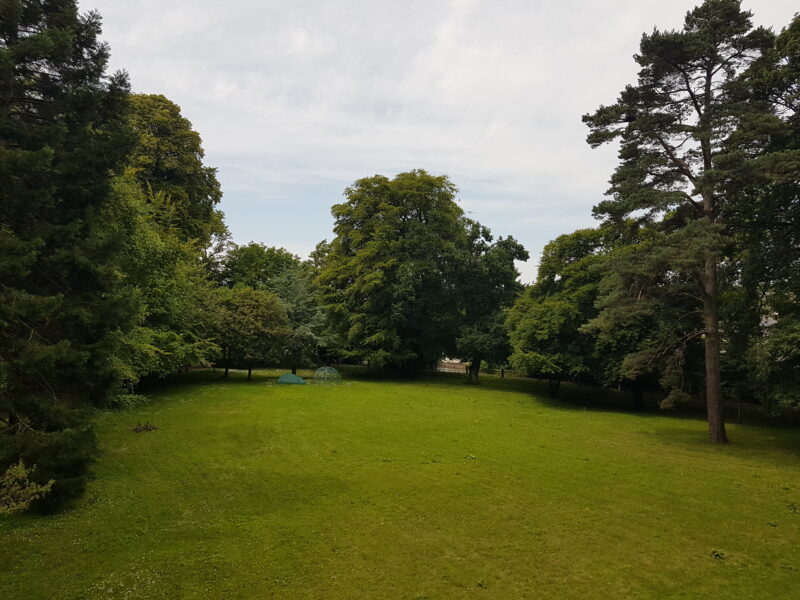
This type of modified woodland occurs within Main and North Mall Campuses covering approximately 1ha. These woodlands are largely dominated by non-natives such as Acer spp., Sycamore and English Elm. Non-natives in the field layer include Japanese Knotweed, Buddleja, Himalayan Balsam and Cherry Laurel. However, native species also occur in the canopy, shrub and field layers. Such species include Alder, Ash, Hawthorn, Lords-and-Ladies, Elder and Enchanter’s Nightshade.
TREELINES
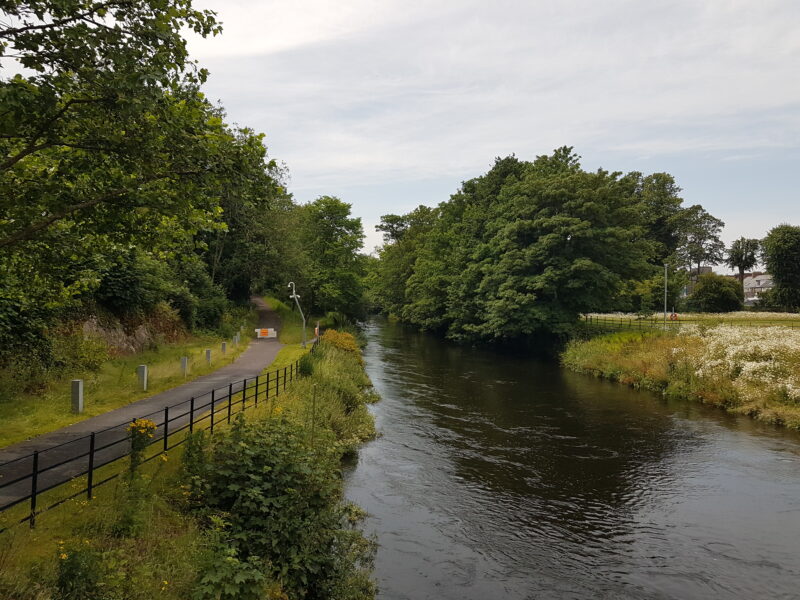
2.3km of treelines were recorded within the UCC Campuses and they vary from young, recently planted treelines to lines of mature trees along rivers or in fields functioning as field boundaries. They include native species such as Alder (Alnus glutinosa) but are largely non-native species such as Sycamore (Acer pseudoplatanus), Large-leaved Lime (Tilia platyphyllos), London Plane (Platanus x acerifolia), Common Lime (Tilia x europaea), Beech (Fagus sylvatica) and Horse Chestnut (Aesculus hippocastanum). Along the River Lee the treelines provide habitat for invertebrates which in turn provide important foraging for bats. At Curraheen Agricultural Campus they provide foraging and perhaps commuting habitat for bats and other wildlife.
HEDGEROWS
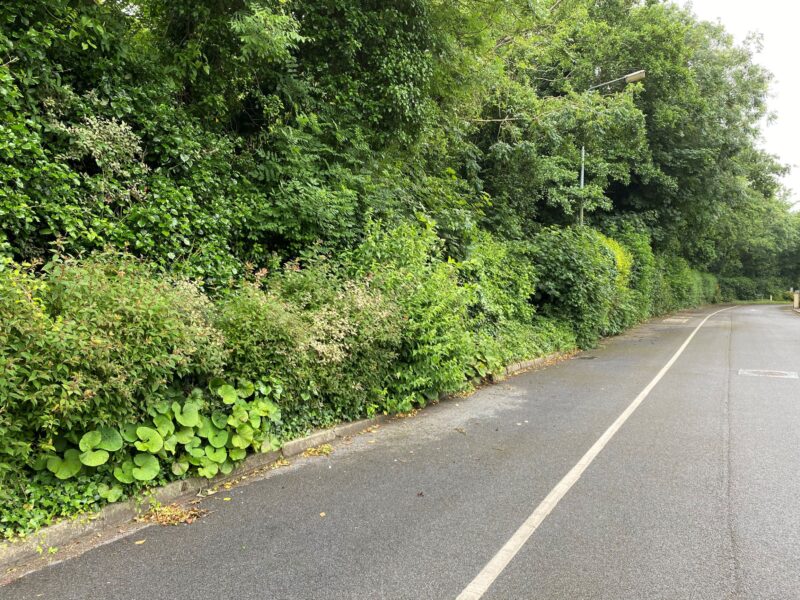
2.4km of hedgerows reside within the North Mall, Curraheen Sports and Curraheen Agricultural Campuses. In the two campuses at Curaheen they are mainly dominated by native species, including Hawthorn, Blackthorn, Hazel, Bramble and Bracken. The hedgerows in the North Mall Campus are dominated by non-native species such as Grisellinia and Acer sp. Other common species include Traveller’s Joy and Buddleja. Ash, Bramble and Holly occur occasionally.
STONEWALLS & OTHER STONEWORK
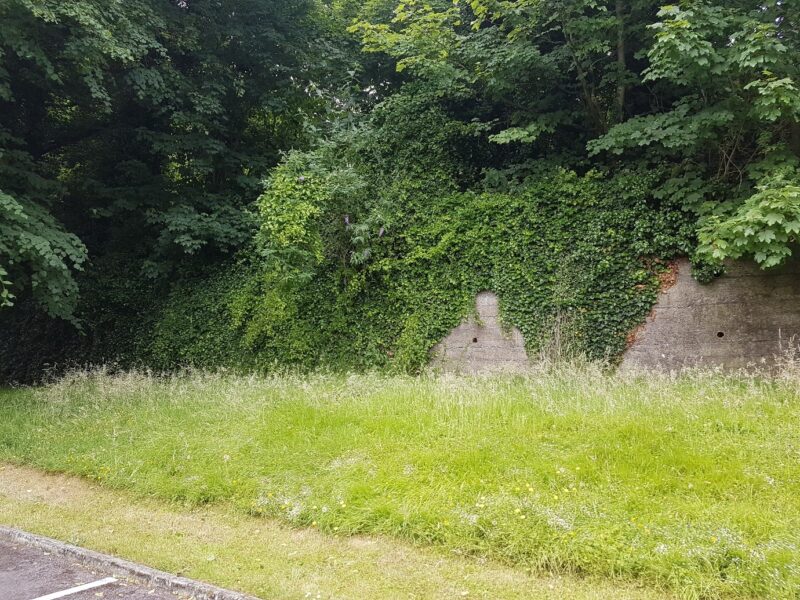
884m of this habitat was recorded from the North Mall Campus, the Mardyke Sports Campus and the Main Campus. An old stone wall forms most of the northern boundary of the North Mall Campus and is largely vegetated with non-natives such as Traveller’s Joy and Buddleja but also supports Bramble and Ivy. Breeding mammals, Wood Mouse and Bank Vole, were recorded at the base of this stone wall. There is a short section of an old stone wall on Main Campus adjacent to the Student Centre which supports both natives (e.g. Herb-Robert, Maidenhair Spleenwort) and non-natives (e.g. Traveller’s Joy, Petty Spurge). A species new to Mid-Cork was recorded here and the bryological flora recorded on this wall was found to be representative of calcareous walls.
